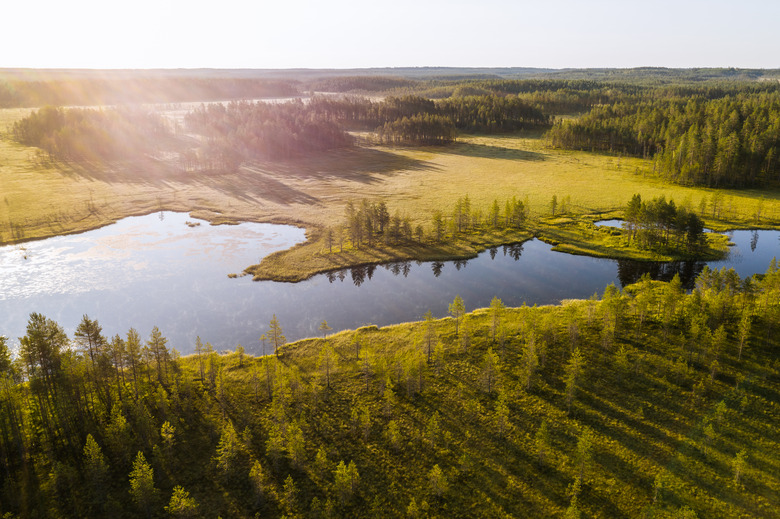What Places Have A Subarctic Climate?
The subarctic climate is found exclusively in the Northern Hemisphere between 50 and 70 degrees of latitude, in the interior of continents. There are no subarctic conditions in the Southern Hemisphere due to the absence of large land masses at the equivalent latitudes. The characteristic features of a subarctic climate are short, mild summers with temperatures that can go as high as 30 C and long, cold winters with the temperatures going as low as -40 C. The precipitation in the subarctic regions is fairly low, from 380 mm to 500 mm over a year. Vegetation in subarctic areas is sparse and mainly coniferous. Plant species such as Labrador tea, cloudberry, bog cranberry, peat mosses and reindeer lichens, black spruce, white spruce and aspen can be found in the subarctic, or boreal, forest.
Subarctic in Europe
Subarctic in Europe
Many regions in Europe experience a subarctic climate. The northern parts of Norway, Finland and Sweden are all subarctic as to climate, with variations for the coastal subarctic areas, where winters may be milder than in the rest of the region due to the moderating effect of proximity to the ocean. Iceland is subarctic in its entirety. The western part of the High Alps between 1600 and 2100 m above sea level and the Eastern Alps in France, Italy, Switzerland and Germany also posses the features of the subarctic climate.
Subarctic in Asia
Subarctic in Asia
Vast areas of Asia lie in the subarctic region. Siberia, which is situated in the northern part of what was once Russia, is a prime example. Siberia's climate varies greatly depending on how close it is to the Arctic Circle. In the far north, summers are as short as one month and winters last for most of the year. In the more southern areas, winters are shorter and milder and summers are longer, with temperatures reaching 30 C. Northern Mongolia and Northern China also have a subarctic climate.
Subarctic in Canada
Subarctic in Canada
Canada is known for its long, harsh winters in the north. This is especially true of southern Labrador and Newfoundland, northern Quebec, northern parts of Ontario, the northern parts of the Prairie provinces and most of Yukon and the Northwest Territories. In these regions snow covers the ground for almost six months a year. The average temperature in these areas is 15 C in the summer and -15 C in the winter. The temperature in the winter can drop below -40 C and is often accompanied by strong winds.
Subarctic in United States
Subarctic in United States
Alaska, located above the northern Canadian border, has a subarctic climate. The Alaskan summers are short and cool, with temperatures averaging 17 C. The winters are very chilly, with short days. Alaska has very little precipitation, most of which comes in the winter in the form of snowfall. Summers are mostly dry with only occasional rain during thunderstorms. On clear nights during the Alaskan winter you can spot the northern lights. The only other part of United States that has a subarctic climate is the High Rocky Mountains in Colorado, Wyoming and Montana, with similar temperatures to those in Alaska.
Cite This Article
MLA
P, Justyna. "What Places Have A Subarctic Climate?" sciencing.com, https://www.sciencing.com/places-subarctic-climate-8508751/. 22 November 2019.
APA
P, Justyna. (2019, November 22). What Places Have A Subarctic Climate?. sciencing.com. Retrieved from https://www.sciencing.com/places-subarctic-climate-8508751/
Chicago
P, Justyna. What Places Have A Subarctic Climate? last modified March 24, 2022. https://www.sciencing.com/places-subarctic-climate-8508751/
